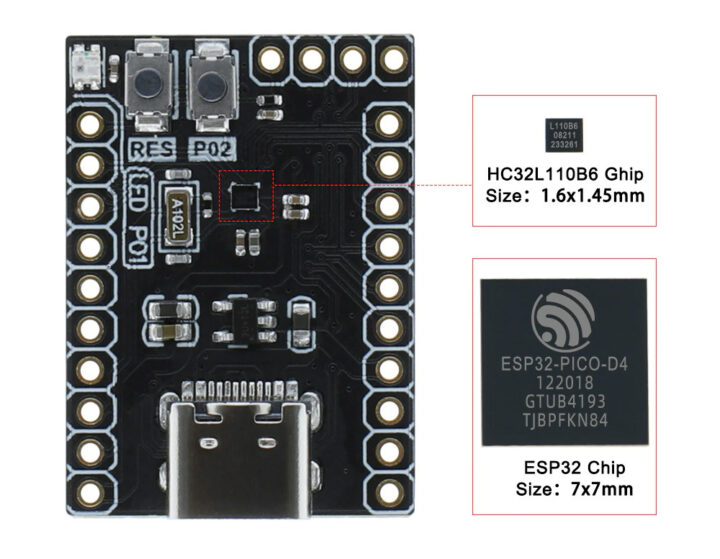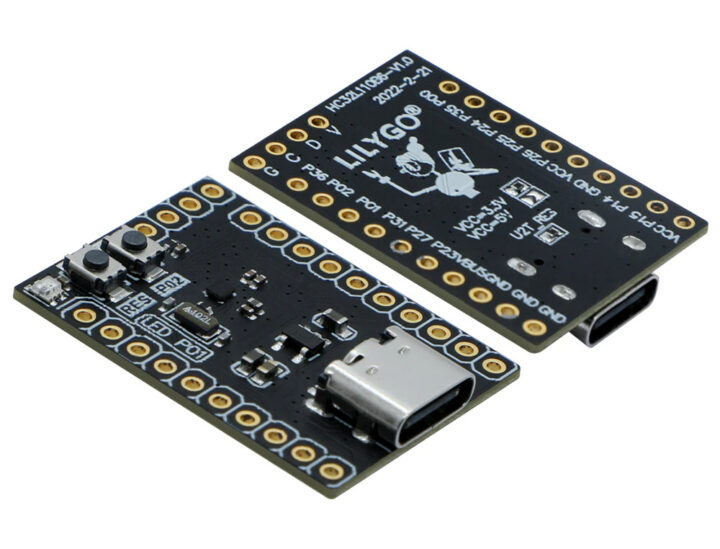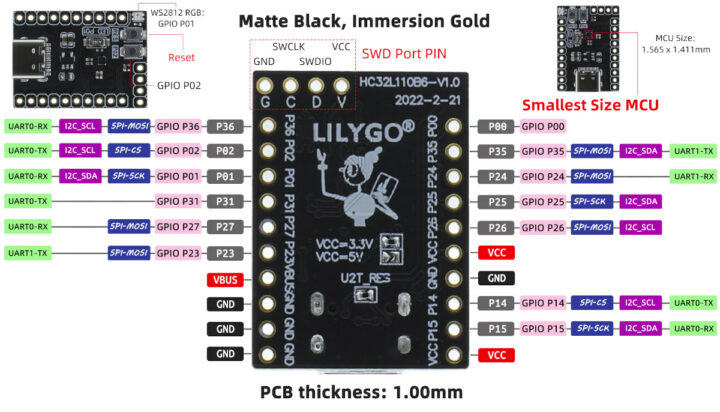HC32L110 Arm Cortex-M0+ MCU is found in a minuscule 1.59 x 1.436 mm CSP16 package that should make it the world’s smallest Arm MCU. LilyGO T-HC32 is one of the first boards with the HC32L110B6 microcontroller, and it is now available for $8.98 on Aliexpress including shipping.
The board offers really basic features with two buttons, a WS2812 RGB LED, and two-row of ten pins each for GPIOs and power signals, plus a 4-pin header for SWD programming. There’s nothing really special about the board or its price, except for the MCU’s size that’s barely discernable from a discrete component, and much smaller than the 7x7mm ESP32-PICO-D4 system-in-package shown in the photo below for comparison.

LilyGO T-HC32 board specifications:
- MCU – HDSC HC32L110B6 Arm Cortex-M0+ @ up to 32 MHz with up to 4KB RAM, up to 32KB flash memory
- Expansion – 2x 10-pin header with GPIO, UART, I2C, SPI, VCC, VBUS, and GND
- Programming – 4-pin SWD header
- Misc – Reset button, user button, WS2812 RGB LED
- Power Supply – 5V via USB Type-C port
- Dimensions – 3 x 2.2 cm
They could have probably made the PCB a little smaller, as some pins are duplicated (VCC and GND), and the board itself is bigger than the nRF52840-based Seeed Studio XIAO BLE Sense board, but at least it could serve as a base to develop ultra-compact solutions based on the HC32L110B6 MCU.
The first time we wrote about the microcontroller there was only documentation in Chinese, but now LilyGO has set up a Github repository with Keil MDK and IAR code samples written in C language, and some basic documentation to get started in English. Sadly all detailed documentation about HC32L110 MCU is still in Chinese only.
 While the T-HC32 board itself is sold for $8.98, you’ll either need a J-Link debugger connected to the SWD interface, or the T-U2T Kit USB to TTL adapter connected to the USB-C port to program the board. The latter is available in a bundle that goes for $14.98 including shipping.
While the T-HC32 board itself is sold for $8.98, you’ll either need a J-Link debugger connected to the SWD interface, or the T-U2T Kit USB to TTL adapter connected to the USB-C port to program the board. The latter is available in a bundle that goes for $14.98 including shipping.

Jean-Luc started CNX Software in 2010 as a part-time endeavor, before quitting his job as a software engineering manager, and starting to write daily news, and reviews full time later in 2011.
Support CNX Software! Donate via cryptocurrencies, become a Patron on Patreon, or purchase goods on Amazon or Aliexpress





